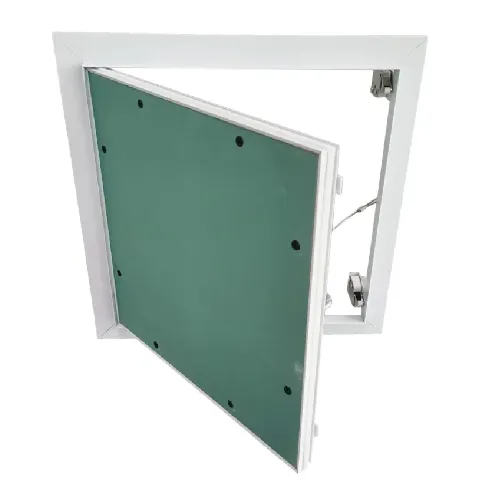Nov . 20, 2024 12:29 Back to list
standard ceiling access panel sizes
Understanding Standard Ceiling Access Panel Sizes
When it comes to construction and renovation, ceiling access panels are essential components that ensure easy access to vital infrastructure, such as plumbing, electrical systems, and HVAC equipment. With a variety of sizes and types available, understanding the standard sizes for ceiling access panels is crucial for contractors, builders, and DIY enthusiasts to ensure proper installation and functionality.
Standard ceiling access panel sizes generally range from small to large, depending on the purpose and design of the building. The most commonly encountered dimensions for these panels include 12x12 inches, 14x14 inches, 16x16 inches, and larger sizes such as 24x24 inches. Some manufacturers even offer custom sizes to meet specific project needs, which is particularly beneficial in buildings with non-standard ceiling configurations.
The choice of size often depends on the intended use of the panel. Smaller panels, such as 12x12 inches, are typically used for access to plumbing or electrical junction boxes, while larger panels may be necessary for more substantial areas that require regular service, like HVAC systems. Understanding the specific requirements of the system being accessed can help determine the appropriate panel size.
standard ceiling access panel sizes

In addition to size, the type of access panel is also a consideration. There are several materials and designs available, including plastic, metal, and drywall access panels, each offering different advantages. Metal panels, for example, tend to provide better durability and resistance to wear and tear, making them suitable for high-traffic areas. On the other hand, plastic access panels are lighter and may be used in less demanding environments.
When planning the installation of ceiling access panels, it’s vital to adhere to local building codes and regulations. These codes vary by region and may specify certain requirements related to the size, material, and installation of access panels. Failing to comply with these regulations can result in costly delays and potential safety hazards.
Proper installation of ceiling access panels is equally important. They should be installed flush with the ceiling to maintain the aesthetic of the space while still allowing easy access. Using the correct fasteners and ensuring a tight seal can prevent dust and debris from entering the ceiling cavity, which can cause maintenance issues over time.
In summary, selecting the right standard ceiling access panel size is crucial for maintaining the integrity and accessibility of essential building systems. By considering the intended use, available materials, and regulatory requirements, builders and contractors can effectively integrate these panels into their projects, ensuring functionality and ease of access for years to come. Proper planning and execution will not only enhance the reliability of the building’s infrastructure but also contribute to overall safety and efficiency.
-
Quality Ceiling Trap Doors & Access Panels | Easy & Secure AccessNewsAug.30,2025
-
Durable Ceiling T Grid Systems | Easy InstallationNewsAug.29,2025
-
PVC Gypsum Ceiling: Durable, Laminated Tiles for Modern SpacesNewsAug.28,2025
-
Pvc Gypsum Ceiling Is DurableNewsAug.21,2025
-
Mineral Fiber Board Is DurableNewsAug.21,2025
-
Ceiling Tile Clip Reusable DesignNewsAug.21,2025







